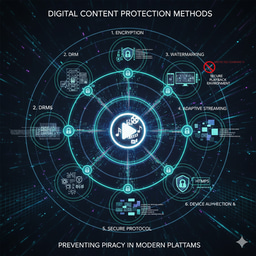The Evolution of Audiovisual (AV) Technology: From Hardware to Human-Centered Experiences

A few days ago, I attended a meeting with clients, consultants and end-users. Once again, I was reminded of a recurring challenge in our industry: the lack of understanding of what AV truly represents today. Too often, AV is reduced to boxes, cables and displays a checklist of hardware items to be procured.
But in reality, audiovisual technology has evolved far beyond equipment. It has become the invisible force shaping the way humans connect, collaborate, learn and innovate. What once was about installing projectors and microphones has now transformed into creating seamless, human-centered experiences. AV today is about enabling interaction, driving engagement and making technology disappear into the background so people can focus on the experience itself.
This shift from technology for technology’s sake to technology designed around people defines the modern AV industry. To understand this journey, I will list where AV started, how it matured and where it is heading.
1. The Early Days of AV: Hardware-Centric Solutions
At its core, audiovisual technology is about bringing sound, video and control together to help people communicate and experience content. Traditionally, this meant microphones, speakers, displays and control panels. But today, an AV system is more like an ecosystem , it interacts with IT networks, the cloud and even IoT devices.
• Audio: microphones, digital signal processors (DSPs), amplifiers and loudspeakers.
• Video: cameras, LED walls, projectors, video switchers and scalers.
• Control: touch panels, processors and automation platforms.
• Infrastructure: cabling (HDMI, CAT6, fiber), wireless transmission, AV-over-IP.
• Software: conferencing platforms (Teams, Zoom, Webex), content management systems, UC&C tools.
Let’s think of it this way: if old-school AV was about connecting boxes, modern AV is about connecting people and experiences.
2. The Rise of Integration: AV Meets IT
If you walked into an AV rack 10 years ago, you’d see walls of blinking hardware: switchers, matrixes, scalers and processors. Today, much of that has moved into software and the cloud.
• AV-over-IP: Video and audio can now travel across standard IP networks, replacing traditional HDMI or SDI.
• Virtualized DSPs & Control: Signal processing and automation can run on virtual servers instead of physical boxes.
• Software-Defined Collaboration Tools: Apps and platforms replace expensive hardware controllers.
This shift means AV professionals now need to speak both AV and IT fluently: TCP/IP, VLANs, QoS, cybersecurity all terms that weren’t part of the AV vocabulary a decade ago.
3. From Rooms to Experiences: Human-Centered Design
• The focus began to shift from what equipment is in the room to how people feel in the room.
• User Experience (UX) became a design principle: simplicity, reliability and accessibility.
• Touchless controls, intuitive interfaces and AI-powered automation emerged.
• The success metric became: Did the technology empower the people? rather than Did the projector turn on?
4. AV as an Experience Enabler:
• In workplaces: AV enables hybrid collaboration (Teams Rooms, Zoom Rooms, immersive telepresence).
• In education: from chalkboards → smart classrooms → interactive, blended learning ecosystems.
• In retail and entertainment: AV creates storytelling, branding and immersive customer journeys.
• In healthcare: AV powers telemedicine, remote surgeries and patient engagement platforms.
• AV is no longer a supporting service — it is a business-critical enabler of outcomes.
5. The Invisible AV: Technology That Disappears:
• Modern AV strives to be invisible yet impactful.
• Wireless presentation systems, auto-framing cameras, AI transcription, spatial audio all designed to fade into the background.
• The goal is frictionless collaboration: no technical barriers, no wasted meeting minutes troubleshooting cables.
• Invisible AV = technology so natural and reliable that users don’t notice it, they just experience it.
6. The Human Factor: Training, Adoption and Change Management:
• Even the most advanced AV fails if people don’t know how to use it.
• Adoption strategies, user training and change management have become as important as hardware.
• AV professionals now act as consultants, educators and advocates, not just system integrators.
• Emphasis on accessibility and inclusivity ensuring AV serves people of all abilities.
7. The Future of AV: Convergence of AI, IoT and XR:
• AI-powered AV: intelligent noise suppression, auto-translation, smart meeting assistants.
• IoT-driven AV: sensors integrated with building management for smart, adaptive spaces.
• Extended Reality (XR): AR/VR immersive experiences in training, design and entertainment.
• The rise of AVaaS (AV-as-a-Service): subscription-based, scalable and cloud-managed.
• The role of AV will expand from supporting communication to shaping human experience ecosystems.
8. Final Thoughts: From Hardware to Human Experience:
The AV industry is no longer about racks of equipment. It is about creating human-centered environments where ideas flow, collaboration is effortless and experiences are memorable.
The challenge remains: bridging the knowledge gap between clients, consultants, IT teams and end-users. AV professionals must continue to educate stakeholders that AV is not just about projectors and speakers it is about shaping the way we connect, collaborate and create in the modern world.
What do you think will be the next game-changer in AV?
Drop your thoughts below...
-
Xchange Advocates are recognized AV/IT industry thought leaders and influencers. We invite you to connect with them and follow their activity across the community as they offer valuable insights and expertise while advocating for and building awareness of the AV industry.
Recommended Content
AV for Sports Industry in India with Cricket Prospective






Please sign in or register for FREE
If you are a registered user on AVIXA Xchange, please sign in